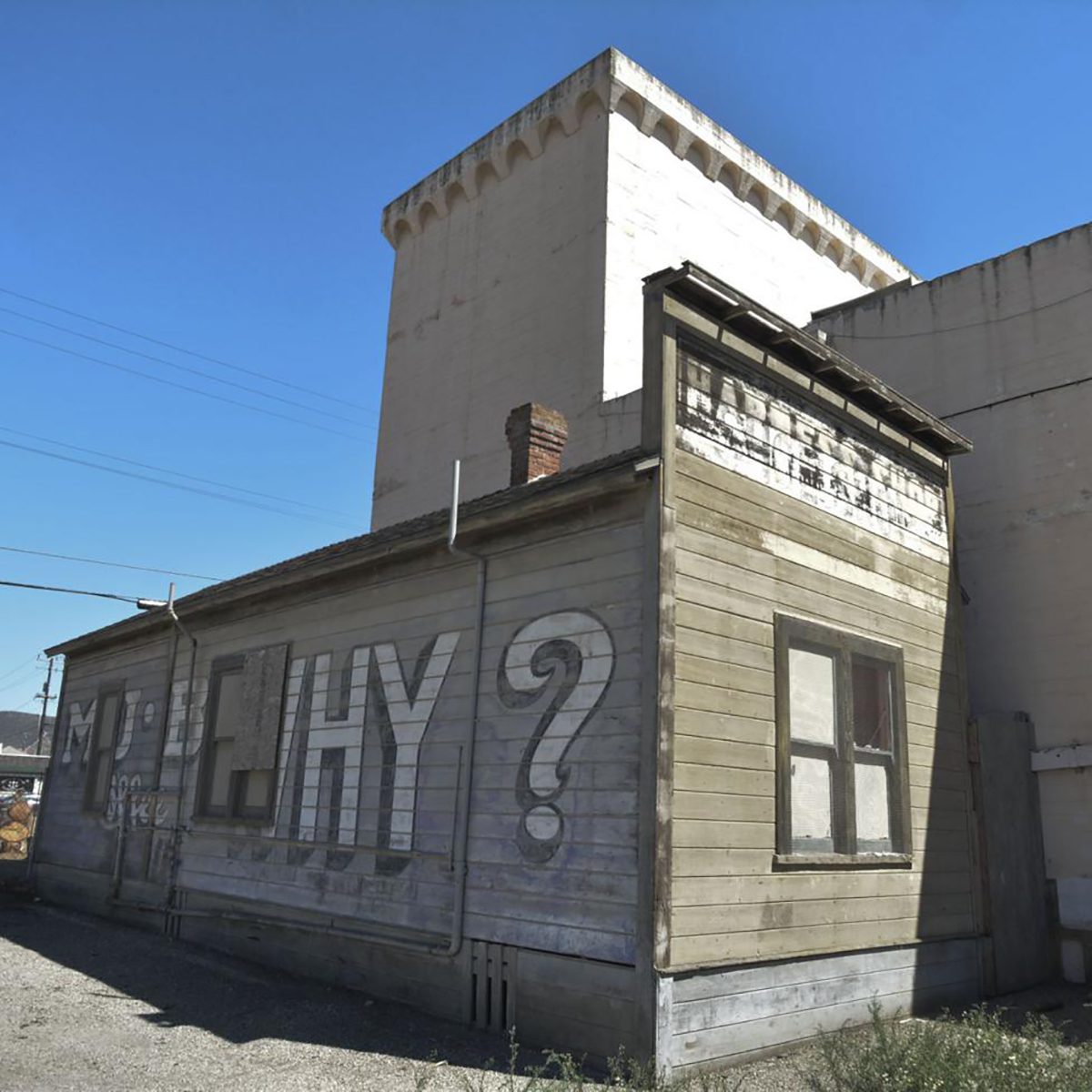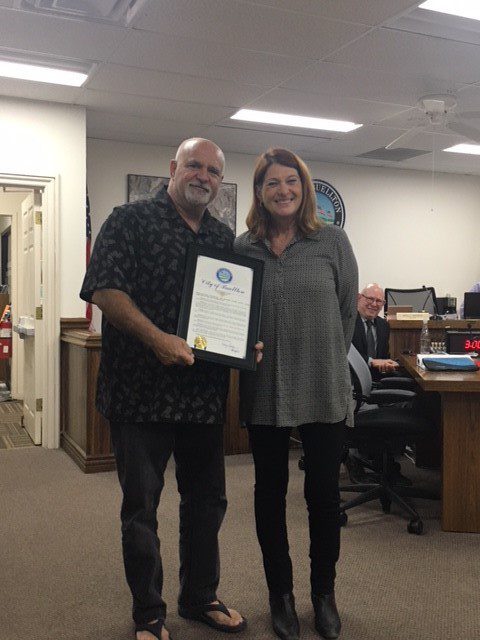Staff Report
The Lompoc Theatre Project continues to work hard at creating a performance venue for the entire Central Coast while restoring the heart of Lompoc, spokeswoman Heather Bedford says.
The full restoration requires a continual effort, and what sometimes gets overlooked is the fact that the nonprofit group is reviving not just one important building, but two, she added.
The second building, next to the theater, could be considered more historically important and is certainly older. The Lompoc Land Office was built in 1875 and currently rests at the back of the theater in the parking lot. Typically referred to as “The Why? Building,” it’s hard to miss with the original 1905 M.J.B. Coffee Company advertisement painted on the side in 1910.
Ironically, the serious design flaw in the theater wound up saving the most important building to the founding of Lompoc, according to Bedford, a board member.
“Our hopes are that once built, we can partner with organizations in the valley who would hold productions in our theater during the off season. Mark Herrier, our president, is a graduate of PCPA, he’s an actor currently on the TV show “Bosch,” and has directed PCPA plays during the summer at Solvang Festival Theater — most recently ‘Don Quixote’,” Bedford said.
The Lompoc Theatre Project will support every performance endeavor of all nonprofits in an effort to enhance the culture of the artistic community of the Central Coast, she added. It currently rents buses to bring large groups of people from Lompoc to enjoy the plays at Solvang Festival Theater during the summer seasons.
“The theatre has almost perfect acoustics and will be a marvelous place for concerts and musical events,” she added.
The Land Office the oldest commercial building still standing in Lompoc. It was there that the first Lompoc plots were laid out, the first streets were named, and the first parcels were sold.
Originally referred to as “The Office,” it was constructed with redwood and is lined on the inside with lath redwood.
Decisions in the Land Office building also resulted in donations of land for El Camino Elementary School, Artesia School, Maple School, many churches, fraternal organizations, Miguelito Park and Evergreen Cemetery.
The Office also funded The Lompoc Record in 1875 and the newspaper’s circulation across California resulted in an onslaught of people arriving and purchasing land in the almost deserted Lompoc valley, with more than 120 new buildings being built within the first year.
Eventually the Land Company went bankrupt due to many disasters and was sold to the Hollister-Dibblee Land Company and later became a harness shop.
When the theater opened in 1927, it quickly became apparent that there was inadequate space backstage for live performances. The problem was solved by moving the land office off H street and attaching it to the rear of the theater, where it became the dressing rooms and storage area for stage equipment.
There are plans to fully fund the $250,000 needed to restore it and move it back up to the front of H street and to create a brick walk with benches and a fountain between it and the theater.
For more information on the Lompoc Theatre Project, visit www.lompoctheatre.org.








